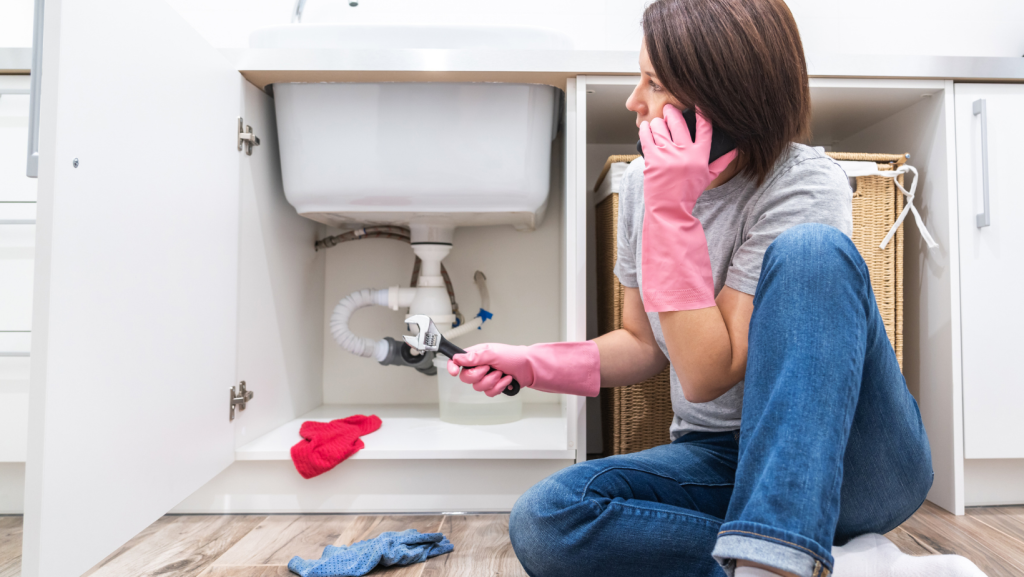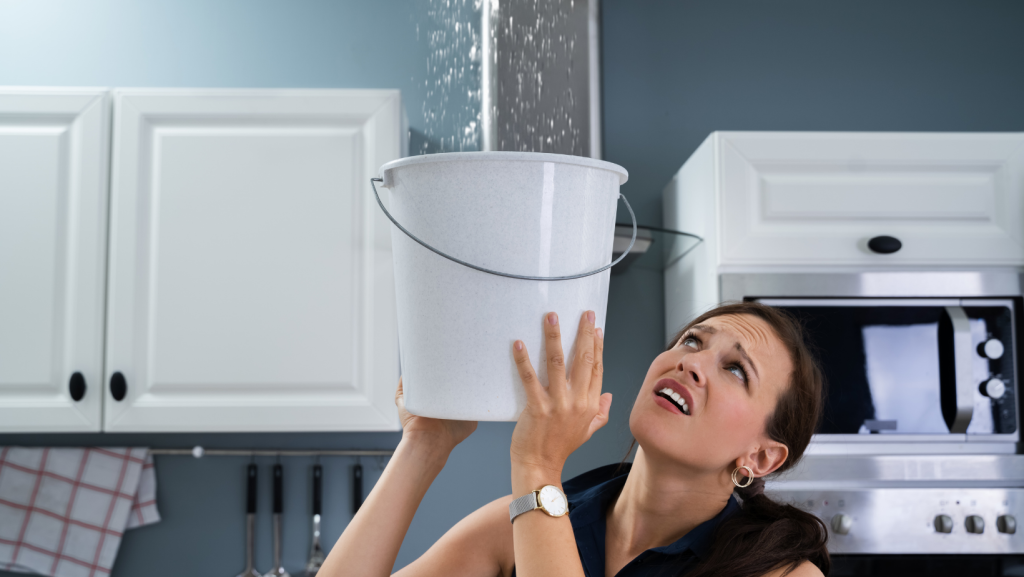Introduction to Waterproofing in Homes
In the realm of home maintenance, “Kitchen and Bathroom Waterproofing” stands out as a critical defense against the pervasive threats of water damage. These essential areas, given their constant exposure to moisture, demand specific attention to prevent damage and preserve the home’s integrity. This section not only underscores the importance of waterproofing kitchens and bathrooms but also addresses the common hurdles homeowners encounter in maintaining these spaces moisture-free.
Importance of Kitchen and Bathroom Waterproofing
The significance of “Kitchen and Bathroom Waterproofing” cannot be overstated. These areas serve as the cornerstone of daily home life, combining functionality with comfort. However, their continual interaction with water makes them susceptible to various forms of damage. Implementing robust waterproofing measures in kitchens and bathrooms is crucial for preventing water penetration that can lead to expensive repairs, ensuring these spaces remain safe, functional, and aesthetically pleasing. Proper waterproofing techniques safeguard the home’s structure, inhibit mold and mildew growth, and maintain the overall value of your property.
Common Challenges in Kitchen and Bathroom Waterproofing
Achieving effective “Kitchen and Bathroom Waterproofing” is often met with obstacles. Moisture has a way of finding the smallest openings, sometimes remaining hidden until it has caused significant damage. Issues like mold and mildew not only pose health hazards but also lead to unpleasant stains and smells. Structural damage, a severe repercussion of inadequate waterproofing, can compromise the home’s foundation, corrode metals, and rot wood. These challenges highlight the necessity for a comprehensive waterproofing strategy, one that prioritizes both preventive measures and regular maintenance.
Understanding Waterproofing Materials and Techniques
Selecting the right materials and employing the best techniques are fundamental to the success of any “Kitchen and Bathroom Waterproofing” project. The market offers a plethora of options, each suited to different aspects of waterproofing. A deeper understanding of these materials and methods is key to ensuring the longevity and effectiveness of waterproofing efforts in these critical home spaces.
Types of Waterproofing Materials
In the quest for successful “Kitchen and Bathroom Waterproofing,” the choice of materials is paramount. Sealants, for example, are perfect for filling gaps and ensuring joints are watertight, providing flexibility to accommodate the natural movement of buildings. Waterproof membranes, whether in liquid or sheet form, act as a stalwart barrier against moisture ingress, especially in high-exposure areas. Coatings, like waterproof paint, add an extra layer of moisture resistance, sealing off porous surfaces from water absorption. The strategic selection of these materials is essential for durable and effective waterproofing solutions.
Innovative Waterproofing Techniques
The evolution of waterproofing technology has introduced innovative techniques that enhance “Kitchen and Bathroom Waterproofing.” These new methods utilize advanced materials and application strategies to tackle the unique challenges of waterproofing these spaces. For instance, nanotechnology coatings offer a thin yet powerful layer of water repellence, while modern drainage solutions efficiently manage water flow away from structures. Together with traditional waterproofing approaches, these innovations provide homeowners with comprehensive protection against water damage.
Waterproofing Your Kitchen
Ensuring your kitchen remains free from water damage is crucial for maintaining a healthy and safe home environment. “Kitchen and Bathroom Waterproofing” strategies should encompass various areas within your kitchen to safeguard against the potential risks of water damage.
Key Areas to Waterproof in Your Kitchen
Critical areas in your kitchen that require waterproofing include sinks, countertops, and spaces around appliances. These zones are most susceptible to water exposure and can be the sources of leaks that lead to mold growth and structural damage. Effective waterproofing around sinks and countertops prevents water from seeping into cabinetry or the subfloor. Similarly, ensuring that areas around appliances like dishwashers and refrigerators are properly sealed can prevent unnoticed leaks that cause extensive damage over time.
DIY Waterproofing Tips for Kitchens
For homeowners looking to undertake “Kitchen and Bathroom Waterproofing,” several DIY tips can help protect your kitchen from water damage:
- Apply silicone sealant around sinks and countertops to prevent water seepage.
- Ensure that the grout between tiles, especially backsplashes, is well-maintained and sealed.
- Regularly inspect appliance hoses and connections for leaks, replacing them as needed to avoid unexpected water damage.
Waterproofing Your Bathroom
Bathrooms, with their constant exposure to water, require diligent waterproofing efforts to prevent damage. Understanding the essential areas to focus on and when to seek professional help can ensure your bathroom remains in top condition.
Essential Waterproofing Spots in the Bathroom
The shower area, bathroom floors, and walls are particularly prone to water damage and must be a priority in any “Kitchen and Bathroom Waterproofing” project. Ensuring these areas are well-sealed against water can prevent a multitude of problems, including mold growth and tile or grout damage. Special attention should be paid to the shower enclosure, which should have a proper waterproof membrane installed beneath the tiles.
Professional Waterproofing Solutions
While DIY waterproofing can be effective for minor projects, professional waterproofing solutions are recommended for comprehensive bathroom waterproofing. Experts can provide thorough assessments and identify potential risks, applying advanced techniques and materials that offer long-lasting protection. Hiring professionals is particularly important for complex projects, such as installing waterproof membranes or when dealing with significant water damage.
Preventative Measures and Maintenance
Regular maintenance and early detection of issues are key components of “Kitchen and Bathroom Waterproofing.” These practices not only extend the life of your waterproofing solutions but also save money by preventing extensive damage.
Regular Maintenance Tips for Waterproof Areas
To maintain the effectiveness of waterproof barriers, it’s important to:
- Regularly inspect seals and grout for cracks or deterioration.
- Clean drains and gutters to prevent water buildup and potential overflow.
- Test shower doors and enclosures for leaks, resealing edges as necessary.
Detecting and Addressing Leaks Early
Early detection of leaks is crucial to prevent widespread water damage. Be vigilant for signs of moisture, such as peeling paint, musty odors, or unexplained increases in water bills. Addressing leaks promptly can prevent mold growth and structural issues, saving you from costly repairs.
Cost Considerations and Budgeting for Waterproofing Projects
Understanding the financial aspects of “Kitchen and Bathroom Waterproofing” allows for effective planning and execution of projects without breaking the bank.
Estimating Your Waterproofing Project
Budgeting for waterproofing projects involves considering the size of the area, the materials required, and whether professional services are needed. Obtain multiple quotes from contractors for larger projects to ensure you’re getting a fair price.
Saving Money on Your Waterproofing Needs
To save on waterproofing costs, consider:
- Performing simple DIY waterproofing tasks yourself.
- Choosing high-quality materials that offer longer-lasting protection, thereby reducing the need for frequent repairs.
- Taking preventative measures seriously to avoid the higher costs associated with fixing extensive water damage.
Hiring Professionals vs. DIY Waterproofing
Deciding between DIY and professional “Kitchen and Bathroom Waterproofing” comes down to the project’s complexity and your skill level.
When to DIY and When to Hire Professionals
DIY projects can be suitable for minor waterproofing tasks, such as applying sealants. However, for comprehensive waterproofing, especially in bathrooms, hiring professionals ensures that the job is done correctly and with the most effective materials and techniques.
Choosing the Right Waterproofing Contractor
Selecting a reputable waterproofing contractor involves:
- Checking for licenses, insurance, and certifications.
- Reviewing past work and customer testimonials.
- Comparing quotes and understanding what services are included.
By addressing these areas, homeowners can effectively manage “Kitchen and Bathroom Waterproofing,” ensuring their spaces are protected from water damage while also considering budget and the need for professional assistance.
Addressing Common FAQs About Waterproofing
In the process of ensuring our homes are adequately protected from water damage, numerous questions arise, particularly when it comes to “Kitchen and Bathroom Waterproofing.” This section aims to shed light on some of the most frequently asked questions, providing clear, concise answers to help homeowners make informed decisions about their waterproofing projects.
Top Waterproofing Questions Answered
1. Why is waterproofing important for kitchens and bathrooms?
Waterproofing is essential in kitchens and bathrooms due to the high exposure to water and humidity in these areas. Proper waterproofing prevents water from seeping into walls, floors, and cabinets, which can cause mold growth, damage to building materials, and structural issues. Ensuring these areas are well-protected helps maintain the integrity and longevity of your home.
2. Can I perform waterproofing tasks myself, or should I hire a professional?
Many waterproofing tasks, especially preventative measures and minor repairs, can be effectively handled as DIY projects. This includes applying sealants and maintaining grout. However, for comprehensive waterproofing solutions, such as installing waterproof membranes or addressing significant water damage, it’s advisable to hire professionals. Their expertise ensures that the waterproofing is done correctly, providing long-term protection.
3. How often should I inspect my home for water damage or leaks?
Regular inspections are key to maintaining the effectiveness of your “Kitchen and Bathroom Waterproofing.” It’s recommended to conduct a thorough inspection at least twice a year. However, areas frequently exposed to water, like showers and areas around kitchen sinks, should be checked more frequently for signs of leakage or deterioration.
4. What are the signs that my kitchen or bathroom needs re-waterproofing?
Indications that your waterproofing may need attention include visible mold or mildew, peeling or bubbling paint, a musty smell, dampness on walls or floors, and any visible leaks. If you notice any of these signs, it’s important to address the issue promptly to prevent further damage.
5. What materials are commonly used in waterproofing kitchens and bathrooms?
Common materials include silicone sealants for sealing gaps, waterproof membranes (either in liquid or sheet form) for floors and walls, and waterproof paints or coatings. Each material serves a specific purpose and should be selected based on the area’s needs and exposure to water.
6. Are there any innovative waterproofing techniques I should consider?
Recent advancements in waterproofing technology offer homeowners more effective and longer-lasting solutions. These include nanotechnology-based sealants, which provide a microscopic layer of protection, and smart drainage systems that enhance water management. Such innovations can complement traditional waterproofing methods, offering comprehensive protection against water damage.
7. How can I ensure my waterproofing efforts are environmentally friendly?
Opt for eco-friendly waterproofing products that are low in volatile organic compounds (VOCs) and are produced with sustainable manufacturing processes. Additionally, consider techniques that minimize water usage and promote efficient drainage, thereby reducing the overall environmental impact of your waterproofing projects
Expert Tile Installation Services in Vancouver
If you’re planning a renovation or looking to enhance the beauty and functionality of your home with high-quality tiles, finding the right experts for tile installation in Vancouver is crucial. Whether it’s for your kitchen, bathroom, or any other area of your home, professional installation ensures longevity, durability, and a flawless finish. For those in Vancouver, Tile Installation Vancouver offers comprehensive services tailored to meet your specific needs, ensuring that every tile is perfectly placed. With a focus on precision and excellence, their team of skilled professionals guarantees a transformation that combines aesthetic appeal with practicality.



